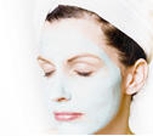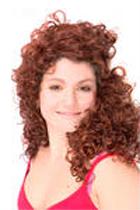What we like more - our fat or our health?
Research points to differences in appetite control and energy expenditure. It is important for obese people not to hold themselves responsible for their condition. Medically supervised fasts are very low calorie diets which provide from 400 to 800 calories per day. While most of these diets are low in calories, the protein provision is very high. The purpose of these diets is to promote fat loss, not muscle loss. The high protein content helps prevent large losses of muscle tissue. Electrolytes, vitamins and minerals are also supplemented. During the holidays or when celebrating, many of us have overeaten. But some people have problems controlling their appetite and end up eating non-stop until eating is interrupted. During a binge, 10,000 to 20,000 calories can be consumed throughout the day. Binges usually consist of foods like cookies, candy, chips, ice cream and many other high calorie foods. Binges are often done in secret. After a binge, many of the feelings that caused the binge, like stress, may have subsided only to be replaced with feelings of guilt and lack of self-control. Binge eating is like bulimia, but does not include purging behaviors. A diagnosis of binge-eating disorder is made when a person binges an average of two days per week over a six month period. The following guidelines have been developed that may help control binge eating: - Eat only at established meal times. - Avoid keeping foods around that may trigger bingeing. - Avoid fad or very restrictive diets. - Keep a food diary and log to assess what prompted the binge. |
Take care your skin
Blood capillaries are found beneath the epidermis, and are linked to an arteriole and a venule. Arterial shunt vessels may bypass the network in ears, the nose and fingertips. The dermis lies below the epidermis and contains a number of structures including blood vessels, nerves, hair follicles, smooth muscle, glands and lymphatic tissue. It consists of loose connective tissue otherwise called areolar connective tissue - collagen, elastin and reticular fibres are present. Erector muscles, attached between the hair papilla and epidermis, can contract, resulting in the hair fibre pulled upright and consequentially goose bumps. The dermis can be split into the papillary and reticular layers. The papillary layer is outermost and extends into the dermis to supply it with vessels. It is composed of loosely arranged fibres. Papillary ridges make up the lines of the hands. The reticular layer is more dense and is continuous with the hypodermis. It contains the bulk of the structures (such as sweat glands). The reticular layer is composed of irregularly arranged fibres and resists stretching. The skin must be regularly cleaned. Unless enough care is taken it will become cracked or inflamed. Unclean skin favors the development of pathogenic organisms. The constantly peeling off dead cells of the epidermis mix with the secretions of the sweat and sebaceous glands and the dust found on the skin to form a filthy layer on its surface. If not washed away the dirt and dead skin slurry begins to decompose emitting a foul smell. The skin supports its own ecosystems of microorganisms, including yeasts and bacteria, which cannot be removed by any amount of cleaning. In general these organisms keep one another in check and are part of a healthy skin. When the balance is disturbed, e.g., by antibiotics which kill bacteria, there may be an overgrowth and infection by yeasts. The skin is continuous with the inner epithelial lining of the body at the orifices, each of which supports its own complement of flora. |
Hair care tips
General debility, caused by severe or long standing illnesses like typhoid, syphilis, chronic cold, influenza and anaemia, also gives rise to hair disorders. It makes the roots of the hair weak, resulting in falling of hair. An unclean condition of the scalp can also cause loss of hair. This weakens the hair roots by blocking the pores with the collected dirt. Heredity is another predisposing factor which may cause hair to fall. Many people (wrongly) will drop a handful of shampoo on their head and then rinse it off. Shampoo must be worked through all of your hair, as well as the scalp and hairline. The site from where the hair is taken is usually a fine scar line which is hidden by the permanent hair in that area. After the procedure there are tiny marks where the grafts have been placed. Initially there is some crusting over these areas (5-14 days) but after this, these areas are usually not detectable. Women with localized thinning on the top of their heads or thinning around the temples often make good candidates for hair transplantation. Prior to evaluation for hair transplantation, it is important for women to discuss your thinning hair with a dermatologist and/or endocrinologist to make sure there is no other treatable reason for the hair loss. Hair loss is not "an inevitable sign of getting older". It has been reported in studies that about 80% of women experience some degree of hair loss before menopause. Much of this hair loss has a hereditary basis-female pattern hair loss. |
|
|
Read our other articles:
Causes of worries
African plant Hoodia help fight fat
Getting sex gladness back solutions
Teeth bonding
Looking for some medicine?
What are the symptoms of menopause?